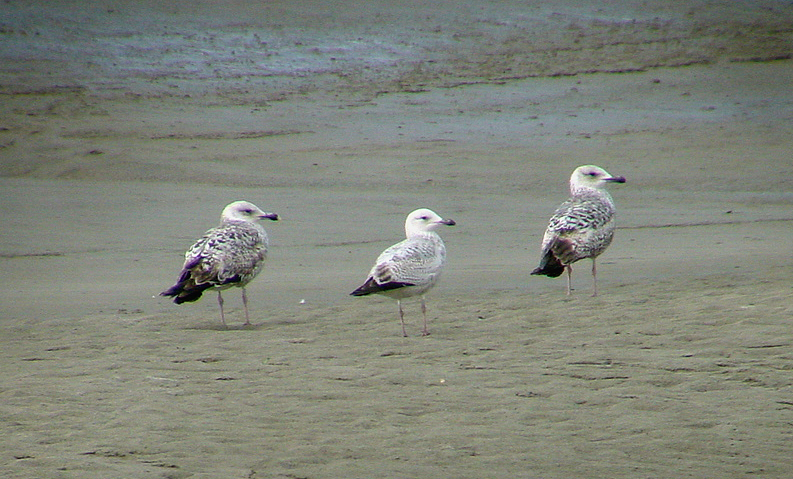 Yellow-legged
Gull - Larus michahellis
Yellow-legged
Gull - Larus michahellis
(last update: October 08 2013)
Coordinators:
Delfín González
Gabriel Martín
Antonio Gutierrez
Amir Ben Dov
Mars Muusse
Yellow-legged Gull michahellis 2CY, April 19 2002, Etaples, NW France (50.42N,1.34E).
Two 2CY michahellis and one 2CY argenteus (centre). Note the differences in coloration and moult stage. By mid-April most michahellis (about 80%) have at least a few coverts moulted in the post-juvenile moult and active moult in the outer and central greater coverts is obvious. From a distance the division between the white head and the dark streaking in the hind-neck, creating a dark collar in michahellis is another clue.
Note that a white-headed appearance is not particularly diagnostic for michahellis in mid-April, or in so-called "first winter" plumage, although sometimes stated otherwise.
